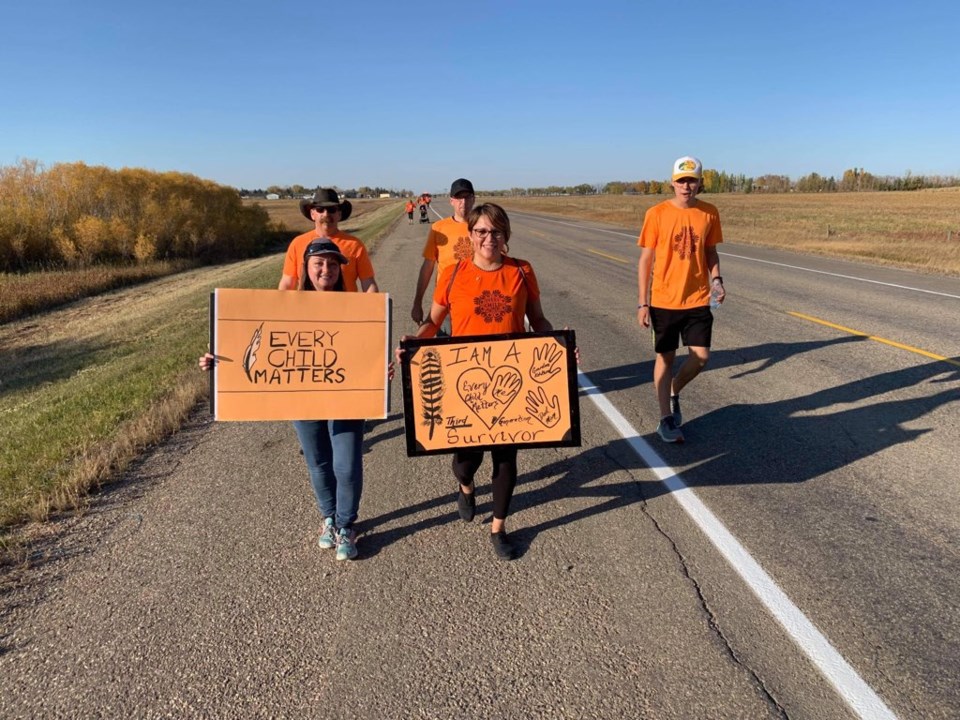As Canada marks the on Sept. 30, individuals and institutions are being urged to acknowledge the colonial origins of this country, which are rooted in the persecution and genocide of Indigenous nations.
There will be many meaningful conversations about ways we can each engage with and support reconciliation. However, one issue that doesn’t get enough attention is how transportation continues to be a serious challenge for Indigenous communities.
Various aspects of transportation are addressed in the and the , which underscore the root causes of ongoing disparities and violence against Indigenous Peoples in Canada.
As a Red River Métis person and transportation researcher concerned with , I collaborate with equity-oriented scholars, advocates, planning professionals, municipalities and transport agencies to address transport inequities in their jurisdictions.
Equity-oriented transportation professionals may embrace an ethos of access to safe and dignified mobility for all, yet our practices don’t recognize how mobility injustices are impacting Indigenous communities and people. This is concerning as it undermines our pursuit of true equity for all and runs the risk of misallocating public funds. Worse, the invisibility of this issue means our communities will endure more harm.
The roots of transportation injustice
Transport development physically , and is directly linked to the chronic and Indigenous communities face. Colonial city-building is founded on tools like the , specifically designed to , enforce economic and political exclusion as well as spatial segregation, extract resources and control our mobility. Though each jurisdiction in Canada has its own , the roots of transportation within this are inseparable.
For instance, few transportation professionals will know the history of the Métis as the “.” This refers to the period when Métis people — spaces set aside by the Dominion Land Survey for future roads and railway lines — as a means of survival. This was a dark period of extreme poverty and housing insecurity, the impacts of which continue to marginalize and harm Métis people today.
There was also the , which confined First Nations people in Western Canada to their reserves, restricting mobility at the discretion of federal Indian Agents. Under this system, police were authorized to arrest and imprison Indigenous people who were found off-reserve without a pass.
This system remained in effect for 60 years until at least the 1940s and to further their development goals.
Lack of investment
in Indigenous communities contributes to transport poverty. These issues put Indigenous people at a disproportionate . They also obstruct access to education, health care, employment, food, culture and the land. They impact the ability for Indigenous communities to , and more.
Some of these impacts may be more acute in rural, remote or isolated communities, but local governments lack an understanding of how urban Indigenous communities experience transportation and mobility. They might often see Indigenous issues as “.” The impacts of this invisibility are likely substantial, given that .
Anti-Indigenous racism
Indigenous communities experience , with and overrepresentation in arrests, with rates as high as in some areas.
Racial profiling has been linked to abusive arrests and — the deadly practice of police driving an Indigenous person to a remote area and leaving them there.
The impacts of colonization are gendered, as evidenced by the disturbing rate of violence against Indigenous women, girls, Two-Spirit, transgender and gender-diverse people.
Transport poverty contributes to this by forcing Indigenous people onto the streets and highways, making them vulnerable to from , and . The most well-known example is British Columbia’s .
Land dispossession and a lack of adequate housing and transportation options also enable disproportionate rates of of Indigenous women and girls. There have also been instances of by members of the public against Indigenous people.
Right to security
Many of the factors underpinning these issues violate the principles of the (UNDRIP), including the right to a life free from discrimination; to life, physical and mental integrity, liberty and security of person; and the right to improve economic and social conditions.
The urgency of Indigenous mobility injustices cannot be overstated. It’s time for planning professionals, municipalities and transport agencies to recognize that transportation is a reconciliation imperative too. There are things we can do to embed reconciliation in our work more meaningfully:
Be diligent about the truth. As transport professionals, our work has a direct impact on Indigenous Peoples and their rights. We can be inspired by jurisdictions taking concrete actions like a or those mandating for cultural competency as ways of seeking truth. Such actions are uncovering the ways municipal institutions and structures have dispossessed and violated Indigenous Peoples, and illuminating the path forward.
Create mechanisms for change. Hire Indigenous planners, create dedicated positions for Indigenous relations, and centre relationships with local and urban Indigenous communities. These have been key to enacting structural change and helping jurisdictions to , but are also contingent on support from mayors and councils.
Align transportation equity goals with UNDRIP. Actions should be in line with the TRC Calls to Action and the MMIWG Calls for Justice.
Recognize the actions of Indigenous communities. A colonial mindset to transportation planning . But we must recognize that to mobility injustices. Governments and professionals must actively listen to Indigenous experiences and recognize how Indigenous people are already filling the gaps.
In doing so, we can broaden our collective perspective on transportation equity, align it with the principles of reconciliation and respond to longstanding calls for justice for Indigenous Peoples.
Jaimy Fischer does not work for, consult, own shares in or receive funding from any company or organization that would benefit from this article, and has disclosed no relevant affiliations beyond their academic appointment.


